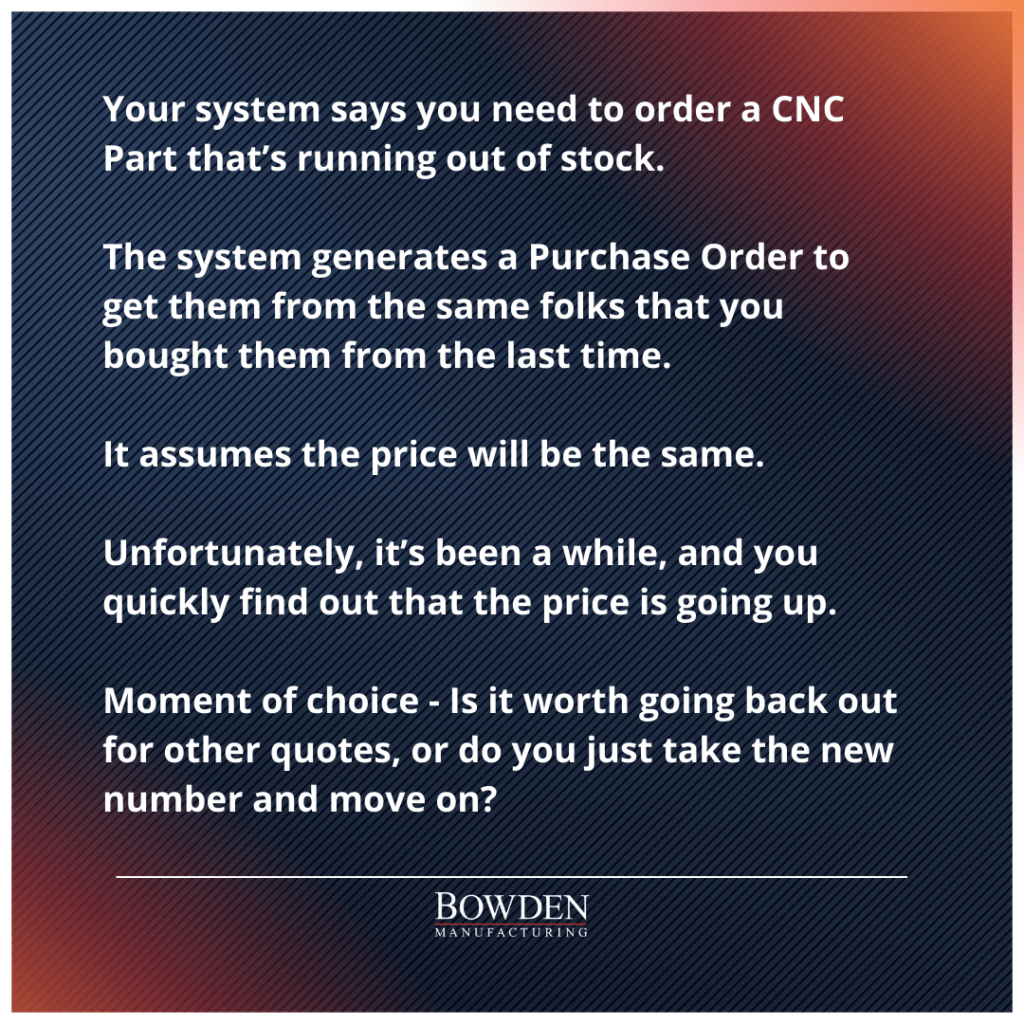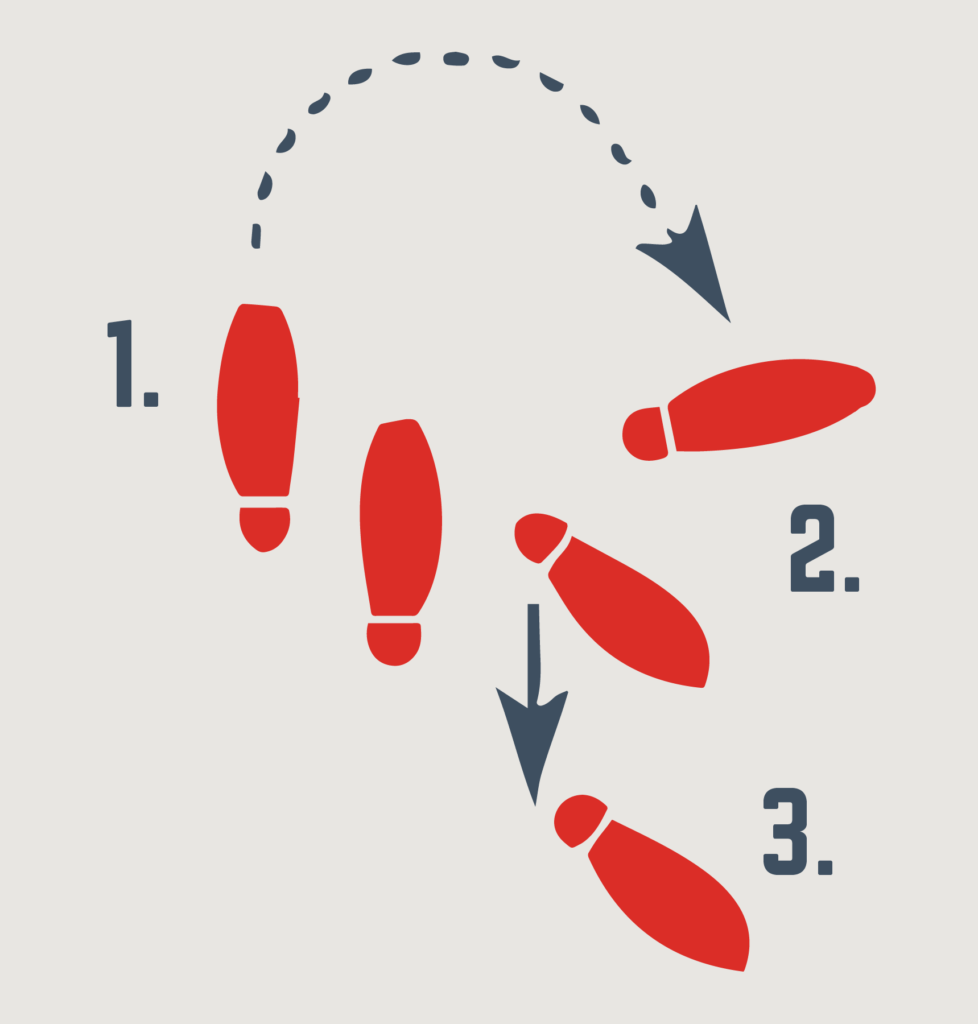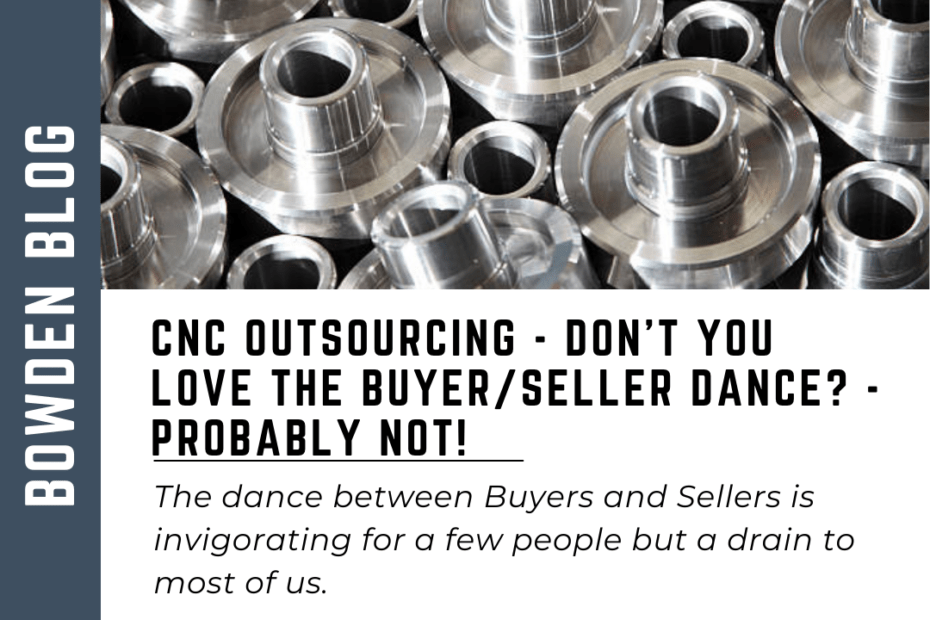
These are the decisions being made in Manufacturing companies all over the country, especially now with inflation driving everything up.
The dance between Buyers and Sellers is invigorating for a few people but a drain to most of us. It’s an interruption and a delay in getting the buying done and moving on with the rest of the things on your priority list.
Many companies feel like they are at the mercy of their supply chains.
Even when vendors are performing poorly, most Buyers feel it would be more painful to find a better option, so they stick with what they’ve got.
Here are three mis-steps in the Buyer/Seller dance that make things difficult and what to do about them.

Mis-Step #1: “It’s easiest to just keep doing the same things we’ve always done.”
Let’s face it, our businesses run on systems that are designed to be operated consistently. If there is an exception or a change, the system slows down.
The more efficient the system can run, the more “productive” it can be, but that doesn’t involve much thoughtful consideration. Especially now, when so many companies are understaffed, just keeping the systems going is hard enough.
WHAT TO DO ABOUT IT: Work a little bit each day on whatever is bugging you the most or causing you the most problems.
Of course, you don’t want to have to slow down for anything, but picking the right “extra” item to work on will have the most return on your effort. If a particular part/supplier/commodity is causing you the most grief, set aside some time to do a little research.
Poke around on the internet and see what you can find out. Type questions into Google that start with “How to fix…..” or “Best way to find….” and see what comes up. 10-15 minutes to investigate a problem area can be powerful.
Once you help find a better solution for that issue, you can tackle the next one. It’s amazing how much better you’ll feel if you can remove even one of your biggest challenges.
Mis-Step #2: “We all pay the most attention to our own needs.”
As humans, we’re naturally selfish. As companies, we’re naturally most concerned about our own perspective and success.
These days, we’re all overworked and understaffed. That adds to the pressure and makes us even more defensive and self-focused.
We don’t really want to listen to other people’s problems….we have more than enough of our own. Unfortunately, that inhibits our ability to work cooperatively with others, even if we know it would be to our own benefit.
If both parties in a relationship are self-focused, the likelihood of building the most beneficial outcomes for both sides is near zero.
WHAT TO DO ABOUT IT: Ask two questions of others, “How could I help you?” and “What would make this easier for you?”
Breaking the cycle of self-focused perspective can start from either side. If you take the first step and ask what you can do to be helpful, it usually takes the conversation down a much more productive path.
You may not be able to do everything they suggest, but you’ll shift the mindset of the conversation in a positive way that can yield better Teamwork and Partnership. It will also help you remember that seeking out a Win-Win is the best basis for thriving relationships.
Often, what would be most helpful to them is something you could do easily. You just didn’t know how helpful it could be!
Mis-Step #3: “You don’t like to talk about Money!”
Let’s face it, there are topics of conversation that are very uncomfortable and money is up there right next to politics.
We all have our own relationships with money and it’s socially awkward to discuss it openly. Even when it’s the company’s money we’re talking about and not our own, it still feels wrong. We’re afraid that we’ll make a mistake or that we’ll give away something we shouldn’t have.
Dealing with other companies feels like negotiating and we don’t want to lose the upper hand by sharing our numbers first. We see this everywhere as we have sealed bids, silent auctions and emailed quotations….our hesitation to talk openly about money is a strong tendency in our society.
Unfortunately, staying closed about money, pricing, dollars and costs is rarely helpful in the long-term. Short-term imbalances can make us feel like we got a “deal” but they best way to build a consistent successful path is if the arrangement is a Win for all sides.
WHAT TO DO ABOUT IT: Start with Ballpark or Target Numbers.
When everyone is hesitant to talk about a sensitive topic like Money, someone needs to break the ice.
Most of the time, you have some idea what numbers would make sense for you, based on prior experience.
Establishing a Target Price or a Ballpark Estimate does two things for you:
- It sets an initial starting point.
- It provides considerable room for movement later.
Once the conversation starts, it tends to flow more readily from all sides. More open conversations tend to lead to stronger relationships and being willing to take a cautious first step will help open things up. The more you do it, the more comfortable you’ll get talking about it.
Ultimately, business relationships need to be about mutual benefit and the financial aspects of the discussion are an important part…..don’t leave them unspoken, take the first step to break the ice and you’ll save everyone time and money.
Final Thoughts
The strongest business relationships are created when we (the humans that make up the companies) overcome some of our natural tendencies of inertia, selfishness and avoiding uncomfortable topics of conversation.
Overcoming those tendencies isn’t easy, but it’s certainly worth the effort.
Getting things out on the table and working together can build Win-Win relationships far beyond our initial expectations.
Hopefully these suggestions can help you turn some of your vendors into partners.

